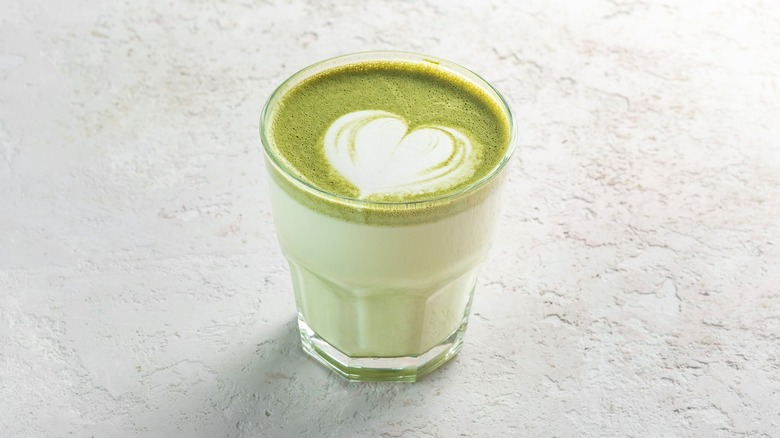Green Tea Vs. Matcha: What's The Difference?
Trendy cafes like Cha Cha Matcha in New York City and Alfred in Los Angeles have brought a beverage that was once only found in Asian cuisine to the Western masses. You may have seen cups filled with beautiful shades of liquid green. But the latest trend isn't a fad. Art of Tea notes there's a reason green teas have held a significant role in Japanese culture for centuries. Those green cups of goodness are full of vitamins, antioxidants, and a caffeinated energy jolt without any jitters.
But, let's get one thing straight: matcha and green tea are not the same. Despite coming from the same plant, the two teas could not be any more different. Matcha and green tea are from the Camellia sinensis plant, but as Art of Tea notes, the tea leaves go through distinct processing and cultivation methods. From the texture, color, and taste, these two drinks have unique elements. To avoid any confusion between you and the coffee master at Starbucks, it's helpful if you understand what you're ordering before you step up to the counter.
Different products from the same plant
The difference between matcha and green tea begins with the leaves themselves. Matcha grows in the shade three weeks before harvest, while green tea leaves are left in the sun (via Art of Tea). During their time in the shade, Food Network explains the chlorophyll levels in matcha increase, resulting in the vibrant green colors you see in your mug. Matcha leaves also contain L-theanine, the amino acid responsible for an umami sweetness and calming buzz, Rishi Tea & Botanicals describes.
Leaves used to make traditional green tea are left in the sun. Compared to matcha leaves, green tea leaves are dull, and the taste is more earthy and bitter. While both teas offer health benefits, green tea leaves are steeped in water and removed, while matcha leaves are ground into a fine powder and mixed with water for consumption. Because you ingest the entire leaf when you drink matcha, you get more health benefits than when drinking traditional green tea (per Healthline). How much benefit can vary, however, as there is a difference between ceremonial grade and culinary grade matcha.

